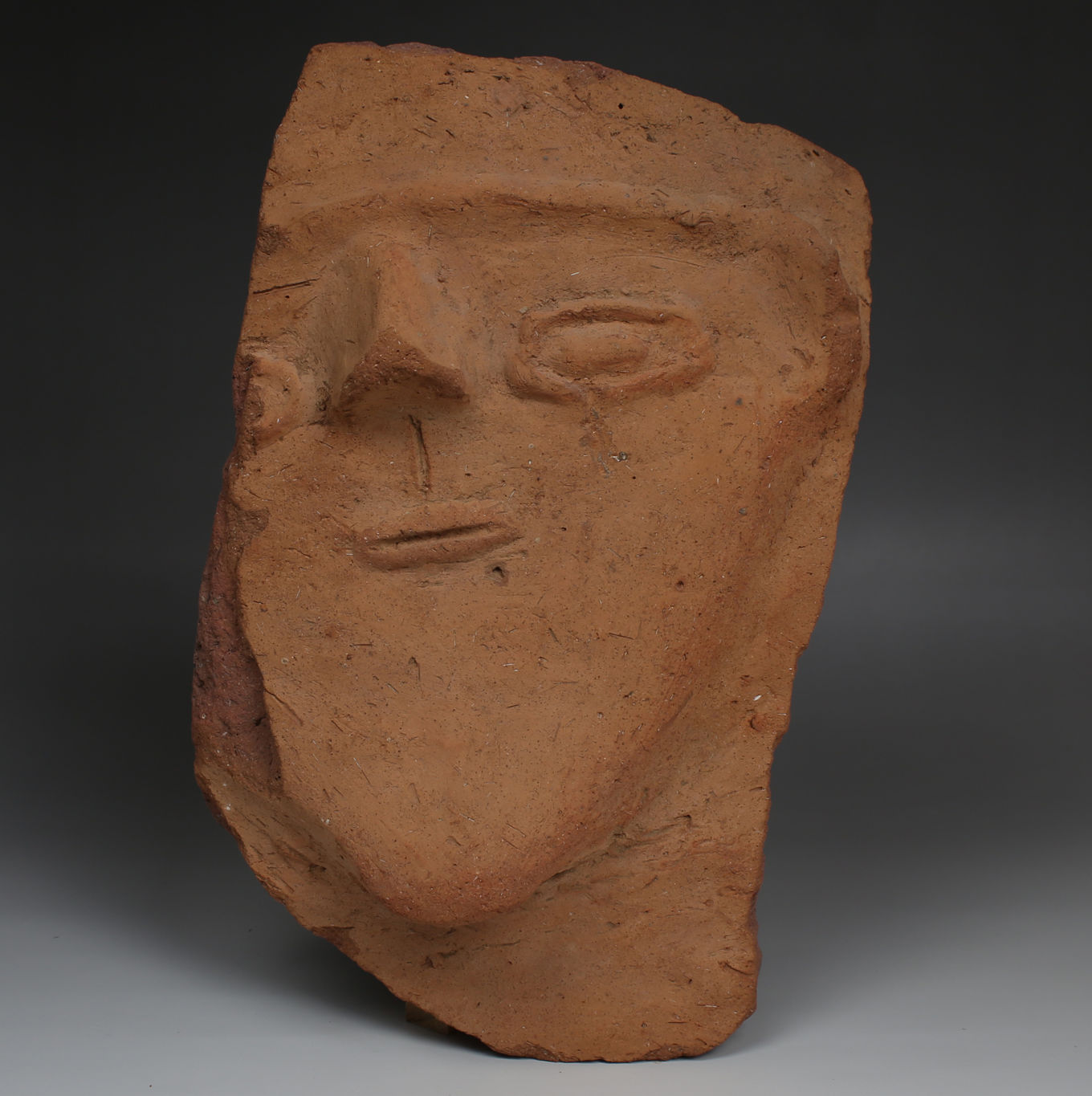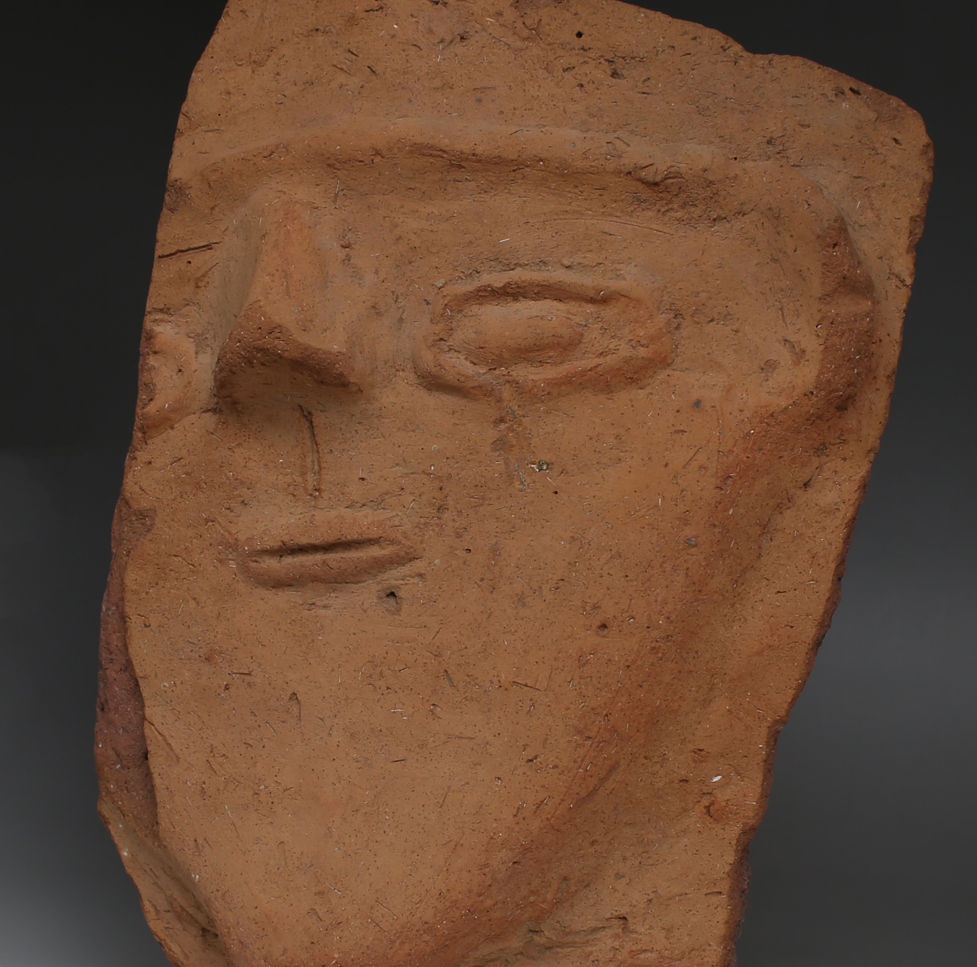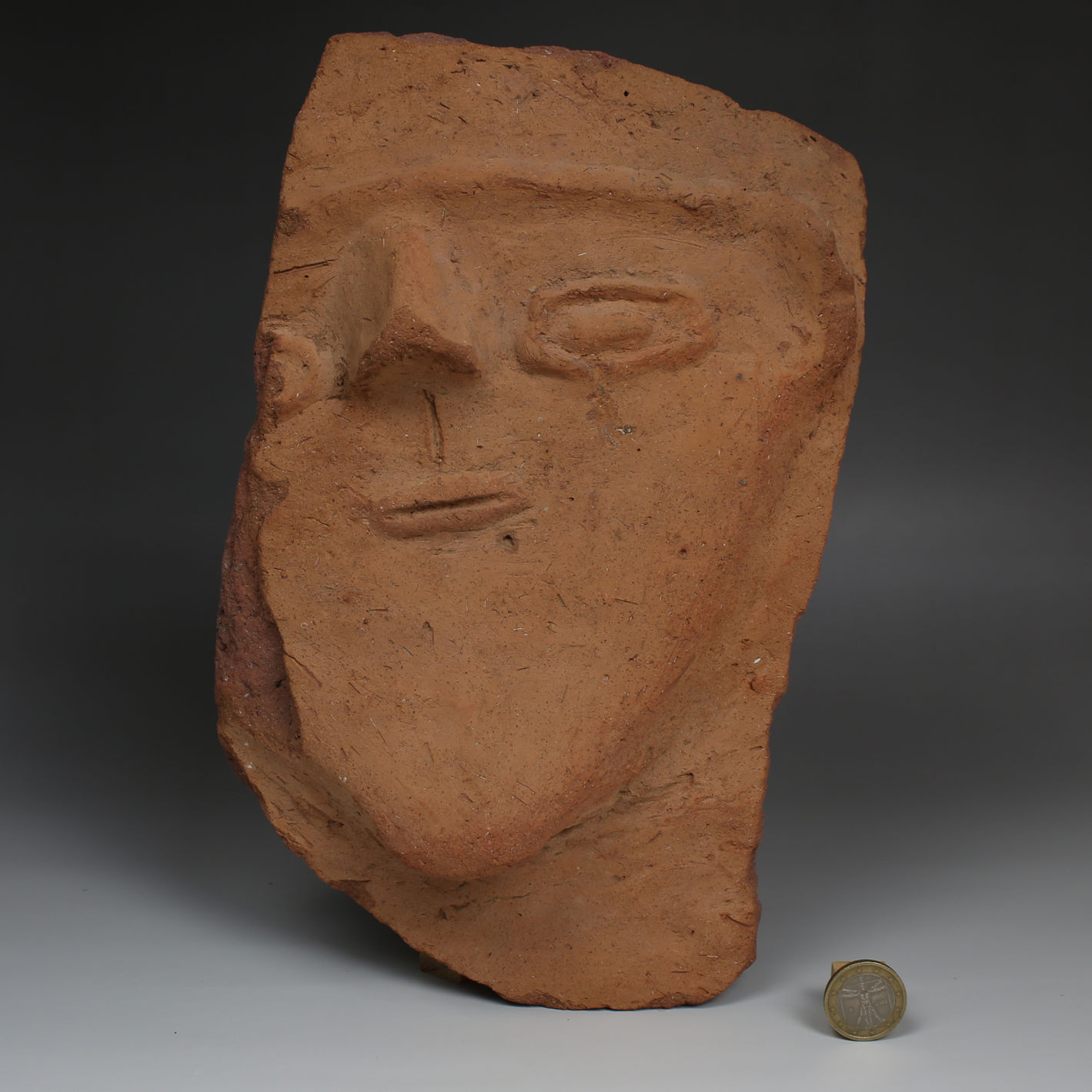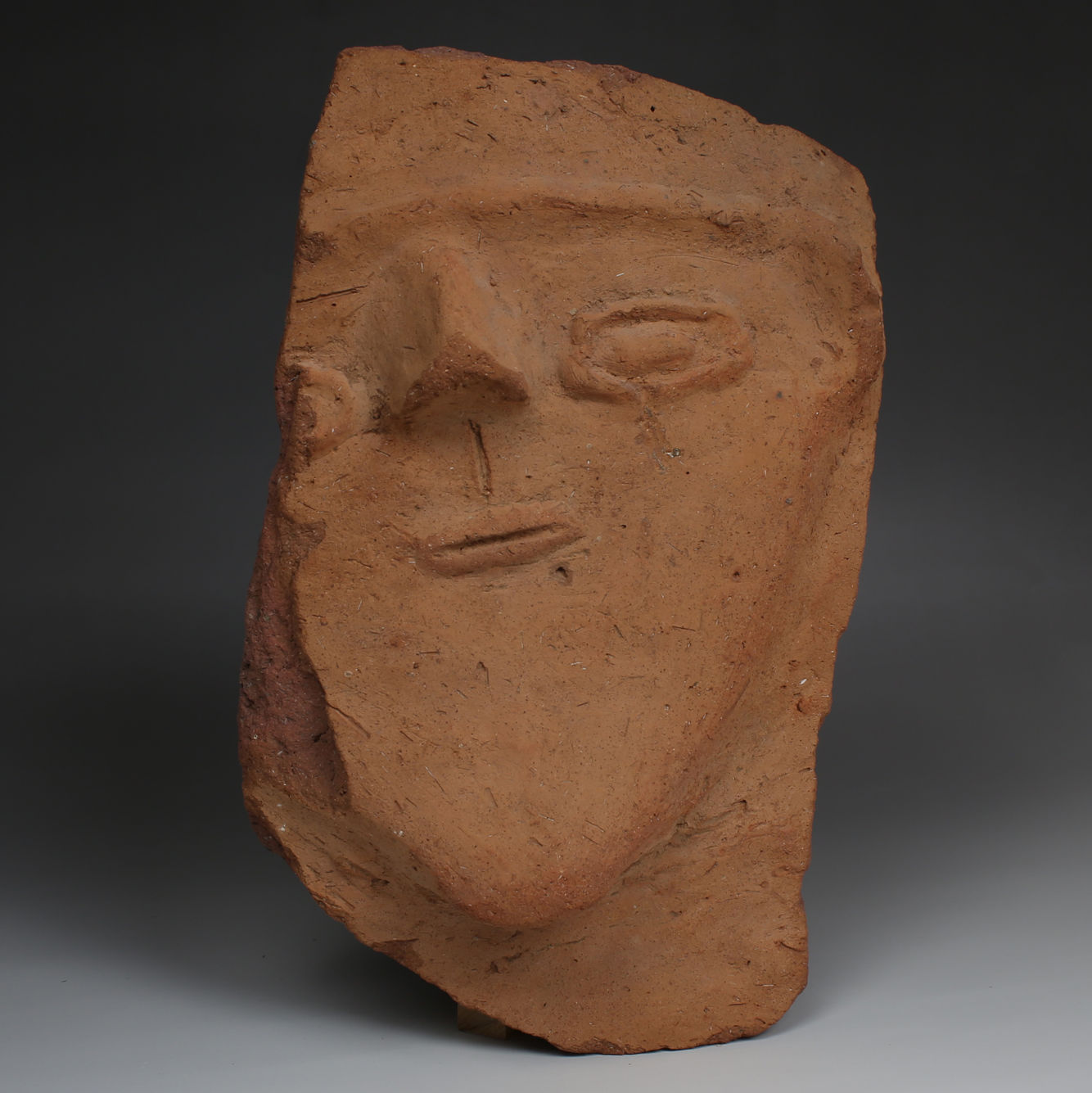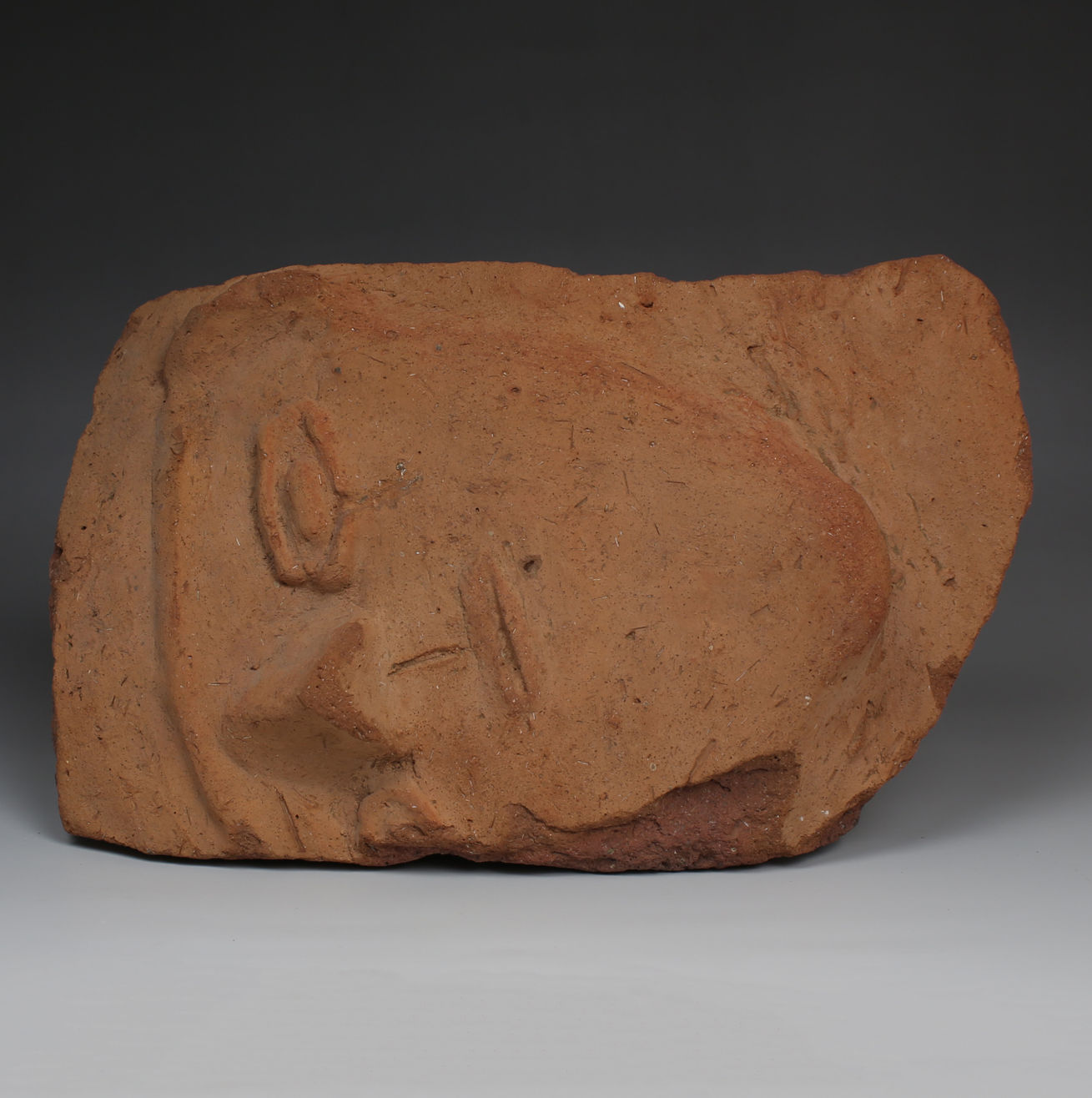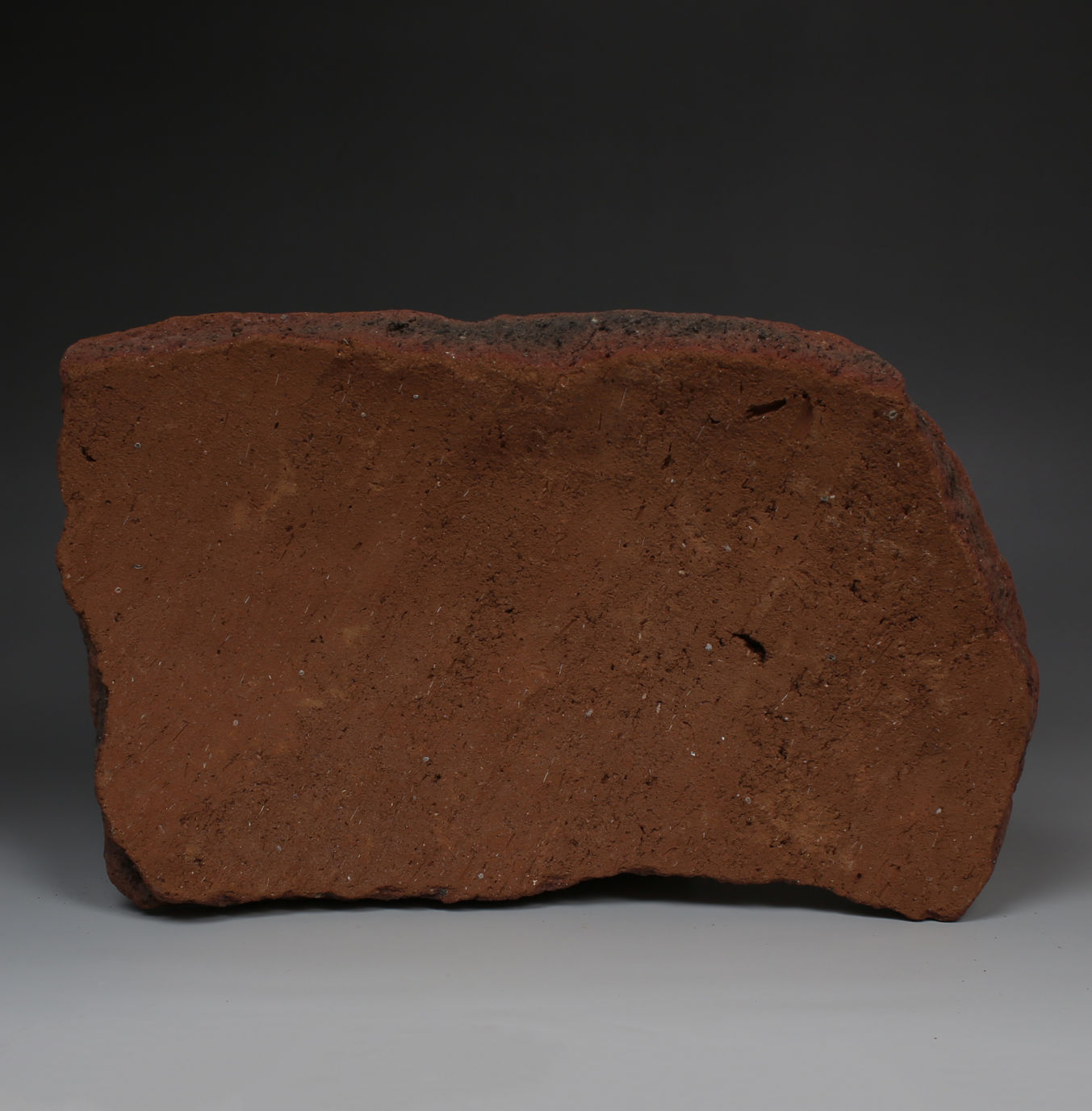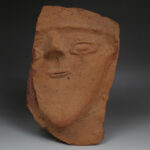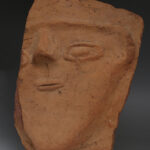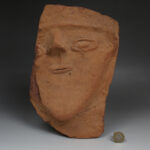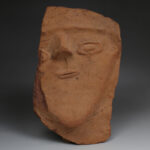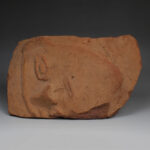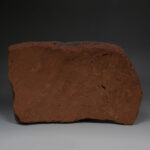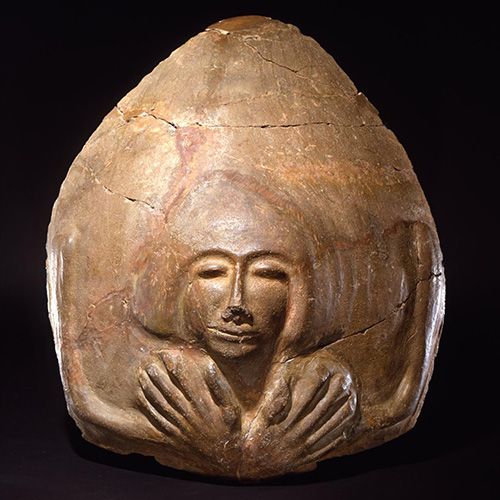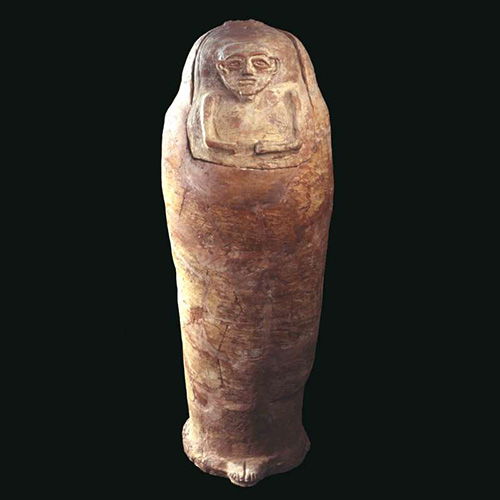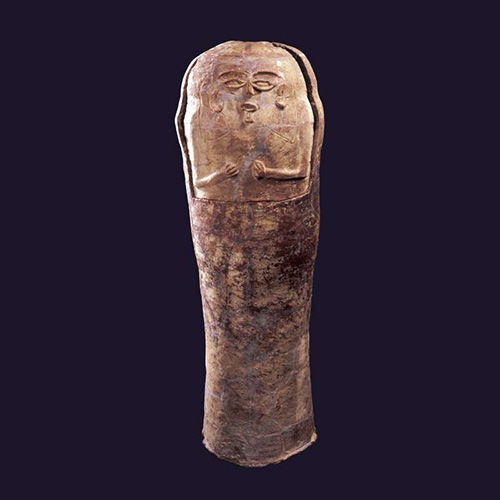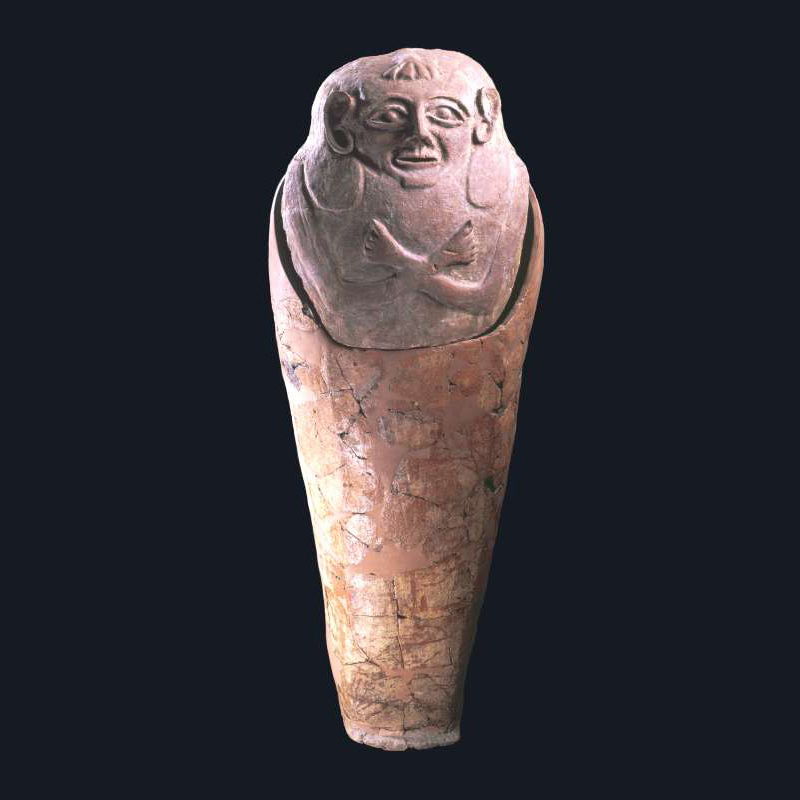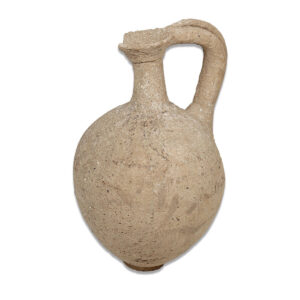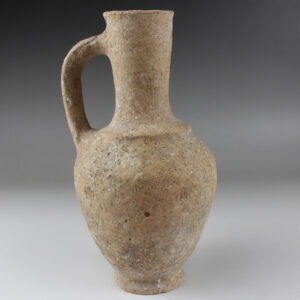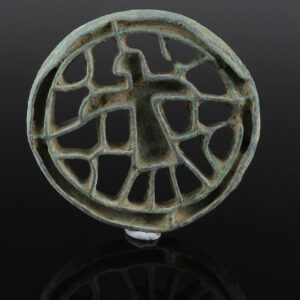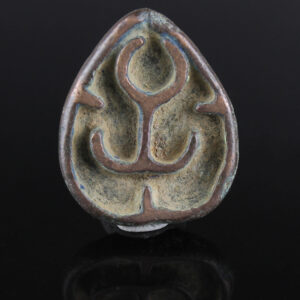Description
| ITEM | Sarcophagus lid |
| MATERIAL | Pottery |
| CULTURE | Bronze Age, Canaanite |
| PERIOD | 1400 – 1200 B.C |
| DIMENSIONS | 270 mm x 157 mm x 35 mm |
| CONDITION | Good condition |
| PROVENANCE | Ex Museum Exhibiton of the Arbeitsgruppe für Biblische Archäologie, Germany (Deaccession) |
The Canaanite sarcophagus lid is an extraordinary artifact that sheds light on the burial practices and artistic traditions of the ancient Canaanite civilization, which flourished in the Levant region from the Bronze Age to the Iron Age. These lids, typically crafted from stone such as limestone, were designed to cover sarcophagi, or stone coffins, that housed the deceased. The lids often featured intricate carvings and reliefs, reflecting both the artistic abilities of the Canaanites and their beliefs about the afterlife. Many Canaanite sarcophagi, particularly from the Late Bronze Age, show a fusion of Egyptian and local Canaanite influences, indicating the strong cultural exchange between these civilizations.
One notable characteristic of Canaanite sarcophagus lids is the stylized human face or mask often carved into the stone. This representation of the deceased, though somewhat abstract, was believed to honor and preserve the identity of the individual in the afterlife. The facial features, typically simple and symmetrical, were not highly personalized but followed conventional designs, which might have reflected the Canaanite belief in the continuity of the soul beyond physical death. Some lids also include decorative motifs, such as geometric patterns or symbols of fertility and protection, which were thought to ensure safe passage to the afterlife.
The Canaanite sarcophagus lid not only functioned as a protective seal for the body but also held religious and social significance. The craftsmanship and level of decoration on a sarcophagus and its lid could indicate the social status of the individual buried within. Wealthy or elite individuals were more likely to be interred in sarcophagi adorned with elaborate carvings and inscriptions. These artifacts provide valuable insights into Canaanite funerary customs, religious beliefs, and their interactions with neighboring cultures like Egypt. They are key pieces of evidence for understanding the broader Canaanite civilization and its place in the ancient world.


